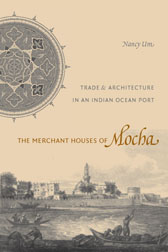
The most important historical port on Yemen’s Red Sea coast is no doubt the old port of Mocha, which gained fame in the West for its association with the Yemen coffee trade. In a new book, The Merchant Houses of Mocha: Trade and Architecture in an Indian Ocean Port, Nancy Um provides a fascinating social history of the trade through this seaport during the Ottoman period. Here is how the book is described on the publisher’s website.
Gaining prominence as a seaport under the Ottomans in the mid-1500s, the city of Mocha on the Red Sea coast of Yemen pulsed with maritime commerce. Its very name became synonymous with Yemen’s most important revenue-producing crop – coffee. After the imams of the Qasimi dynasty ousted the Ottomans in 1635, Mocha’s trade turned eastward toward the Indian Ocean and coastal India. Merchants and shipowners from Asian, African, and European shores flocked to the city to trade in Arabian coffee and aromatics, Indian textiles, Asian spices, and silver from the New World.
Nancy Um tells how and why Mocha’s urban shape and architecture took the forms they did. Mocha was a hub in a great trade network encompassing overseas cities, agricultural hinterlands, and inland market centers. All these connected places, together with the functional demands of commerce in the city, the social stratification of its residents, and the imam’s desire for wealth, contributed to Mocha’s architectural and urban form.
Eventually, in the mid-1800s, the Ottomans regained control over Yemen and abandoned Mocha as their coastal base. Its trade and its population diminished and its magnificent buildings began to crumble, until few traces are left of them today. This book helps bring Mocha to life once again.
Contents
Acknowledgments
Note on Transliteration, Dates, and Abbreviations
Introduction1. The Mocha Trade Network
2. The Yemeni Coffee Network
3. A Littoral Society in Yemen
4. Merchants and Nakhudhas
5. The Urban Form and Orientation of Mocha
6. Trading Spaces
7. On the Politics of Inside and OutConclusion: The End of the Mocha Era
Appendix A. The Imams of Qasimi Yemen and the Governors of Mocha
Appendix B. Archival and Museum Sources ConsultedNotes
Glossary
References Cited
Illustration Credits
IndexNancy Um is associate professor of art history at Binghamton University in New York.